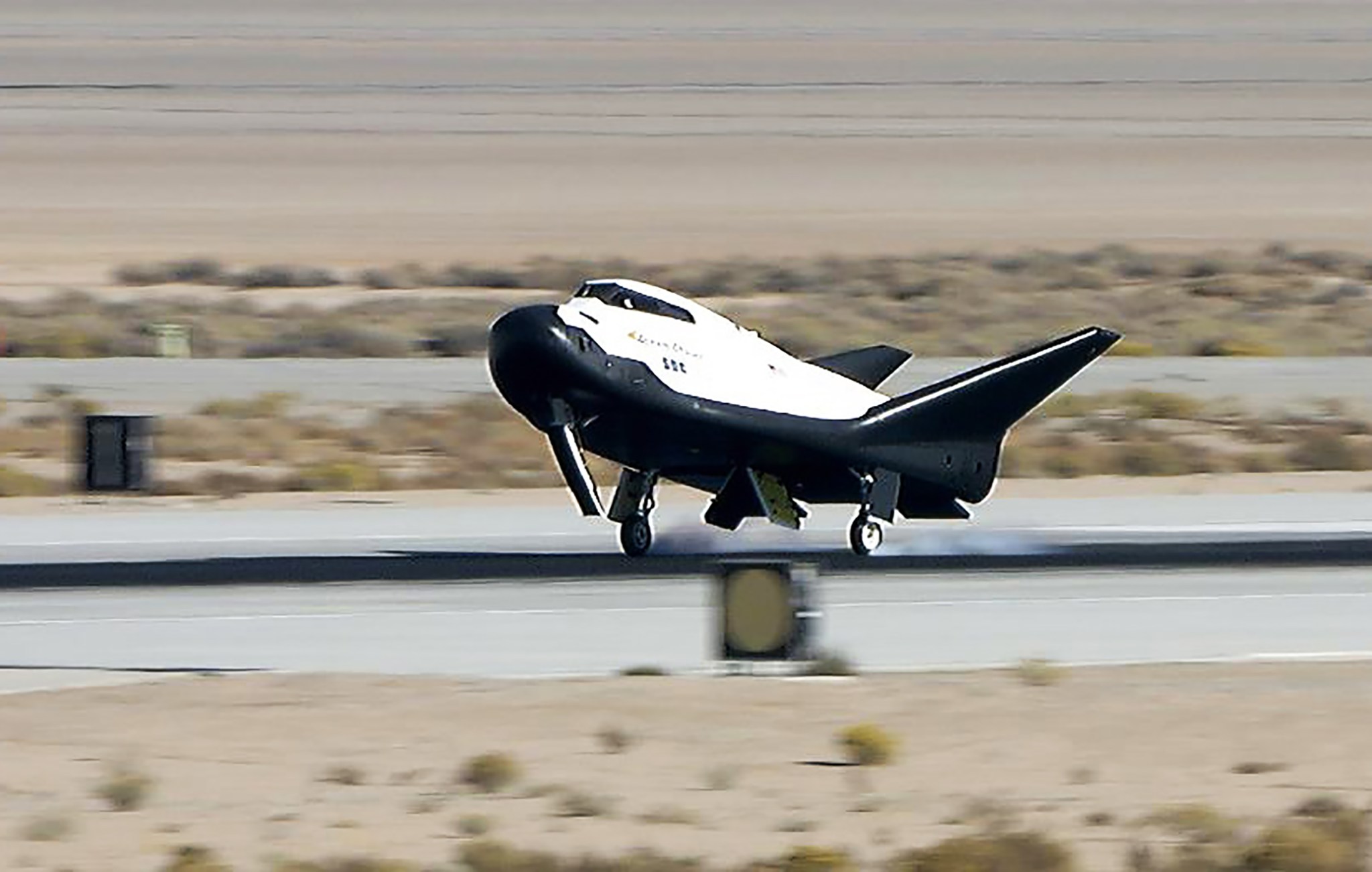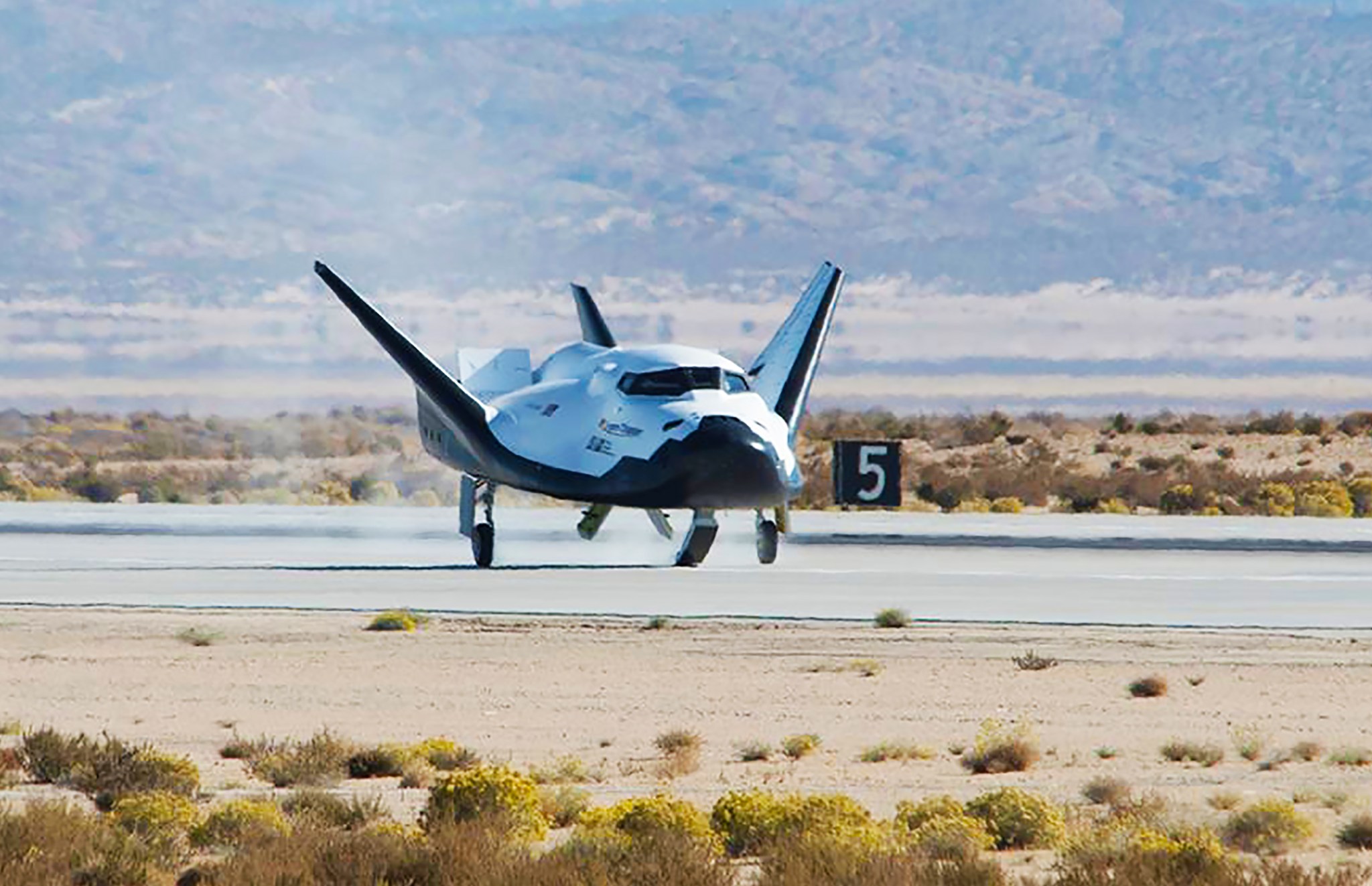By Bob Granath
NASA’s Kennedy Space Center, Florida
Sierra Nevada Corp.’s Dream Chaser spacecraft recently glided to a successful landing at NASA’s Armstrong Flight Research Center located on Edwards Air Force Base in California. Completion of Dream Chaser’s free flight test on Nov. 11, 2017, was a major milestone under a Space Act Agreement with NASA’s Commercial Crew Program.
NASA selected Sierra Nevada Corp., along with Orbital ATK and SpaceX, for the agency’s second commercial resupply contracts to deliver critical science, research and technology demonstrations to the International Space Station from 2019 to 2024.
For the free flight test, a Columbia Helicopters model 234-UT heavy-lift helicopter carried aloft an uncrewed Dream Chaser test article, suspended at the end of a cable. The lifting-body, winged spacecraft had all the same outer mold line specifications as a flight-ready vehicle. A lifting body is a fixed-wing aircraft or spacecraft shaped so that the vehicle body itself produces lift.
After release, Dream Chaser glided on its own and landed in a manner similar to NASA’s space shuttles.
“It is very exciting that Sierra Nevada Corp. successfully completed this important free-flight test,” said Steve Stich, deputy manager of NASA’s Commercial Crew Program. “The Dream Chaser team has done an amazing job preparing for and executing this test, and the Commercial Crew Program has been with them along the way. The flight computers and avionics systems are the same as the orbital vehicle so this test will pave the way for future landings for the International Space Station missions.”
The current tests are helping Sierra Nevada Corp. validate the aerodynamic properties, flight software and control system performance of the Dream Chaser under the Commercial Crew Integrated Capability Contract, or CCiCap, for commercial crew.
“This test represents the culmination of many years of work by the Sierra Nevada team in developing a liftingbody spacecraft with the capability of performing both crewed and uncrewed cargo-carrying missions to the space station,” said Mike Lee, NASA Commercial Crew Program Space Act Agreement partner manager. “It was a significant achievement that successfully demonstrated the final phase of atmospheric flight that will occur after re-entry from an orbital mission.”
The spacecraft arrived at Armstrong on Jan. 25. Evaluations included a series of tests, including successful captive carry tests where the Dream Chaser test vehicle was carried over the California desert by the heavy-lift helicopter clearing the way for the recent release and free flight.
“We had an outstanding free flight test and are very grateful to both our SNC team and NASA for getting us here,” said Steve Lindsey, vice president, Sierra Nevada Corp.’s Space Exploration Systems. “We are excited to complete this critical milestone and can’t wait to move forward with the program. This fully successful Dream Chaser free flight test gets us one step closer to space.”
The data from these tests also will help in the final design of the cargo Dream Chaser, scheduled for at least six supply delivery missions to the space station. With its capability to return to a runway landing, the spacecraft will be able to bring back experiments and other cargo.
“Dream Chaser is planned to be the newest addition to the fleet of vehicles delivering and returning critical science samples and hardware to and from the International Space Station.” said Kirk Shireman, NASA’s Space Station Program manager. “This test is a critical next step for our commercial partners on their path to their first flight.”
The free flight and landing were similar to five approach and landing flight tests of the space shuttle in 1977. The space shuttle Enterprise was released from a NASA 747 shuttle carrier aircraft, gliding to a piloted landing at Edwards. Dream Chaser is being designed to make automated, pilotless flights back to Earth from the space station.





























